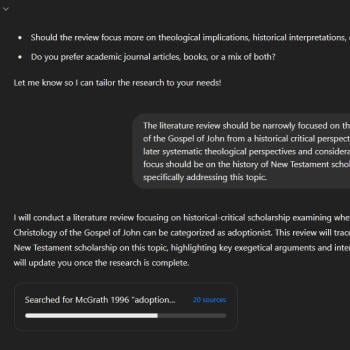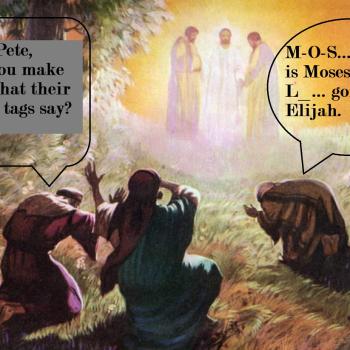This is one of several chapters that I will be referring to in my conference paper on “The Satirical Use of Christian Material in the Mandaean Book of John” in the Aramaic section at SBL in a few days’ time.
Some parts of it are still rough, and some require commentary – in particular the following two. First, the word for “Mandaean priest” is tarmid, and derives from an earlier use of the term to mean “disciple” (as the cognate talmid does in other dialects of Aramaic). And so the overtones of Jesus becoming John’s disciple have the potential to be missed in an English translation (although Jesus’ desire to become an adherent of Mandaeism remains clear).
 Second, the term qudša and related words are clearly the same terms used by Jews and Christians for “holy.” But since the Mandaeans view figures and things which are holy in these other traditions as malevolent, the term in Mandaean literature has the opposite connotations of “infernal.” And so when Ruha (Spirit, often Ruha d-qudša) says that the Jordan has “made her infernal” or “defiled her,” is she thinking that it is a good thing or a bad thing?
Second, the term qudša and related words are clearly the same terms used by Jews and Christians for “holy.” But since the Mandaeans view figures and things which are holy in these other traditions as malevolent, the term in Mandaean literature has the opposite connotations of “infernal.” And so when Ruha (Spirit, often Ruha d-qudša) says that the Jordan has “made her infernal” or “defiled her,” is she thinking that it is a good thing or a bad thing?
The Mandaean versions of stories known from Jewish and Christian sources are fascinating and typically full of polemical satire.
I’m getting back to work on preparations on the actual conference paper, but do feel free to chime in about the translation and about the Mandaeans more generally!


 I have posted a very rough draft of chapter 30 of the Mandaean Book of John, which depicts Jesus coming to John the Baptist in order to be baptized by him. You can read it by clicking through to the Mandaean Book of John blog
I have posted a very rough draft of chapter 30 of the Mandaean Book of John, which depicts Jesus coming to John the Baptist in order to be baptized by him. You can read it by clicking through to the Mandaean Book of John blog









